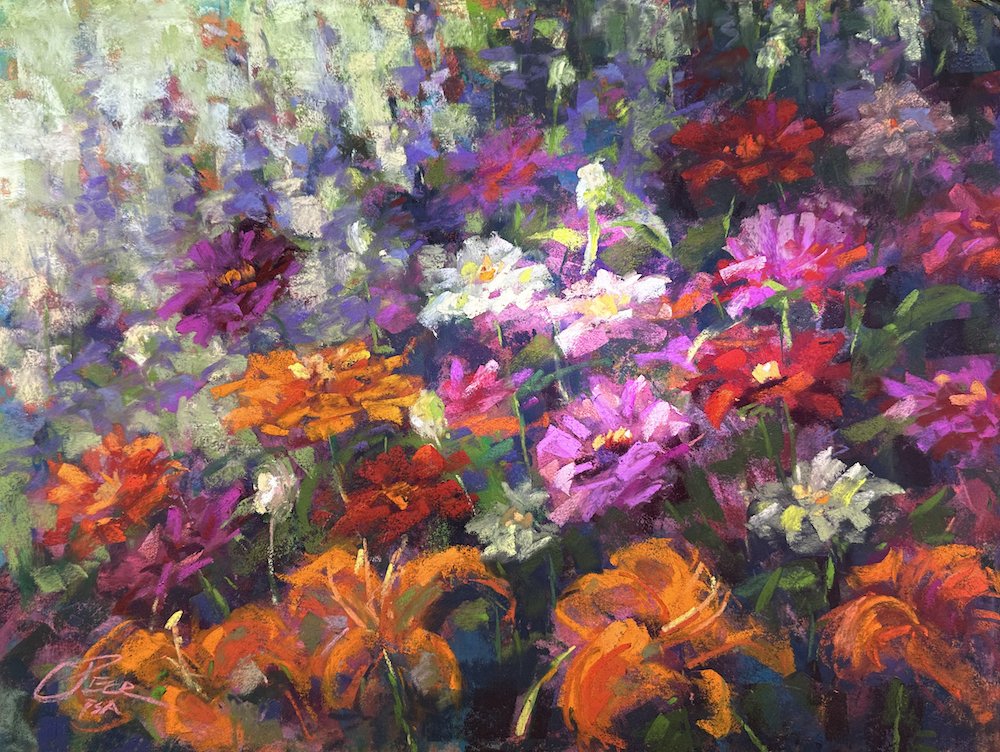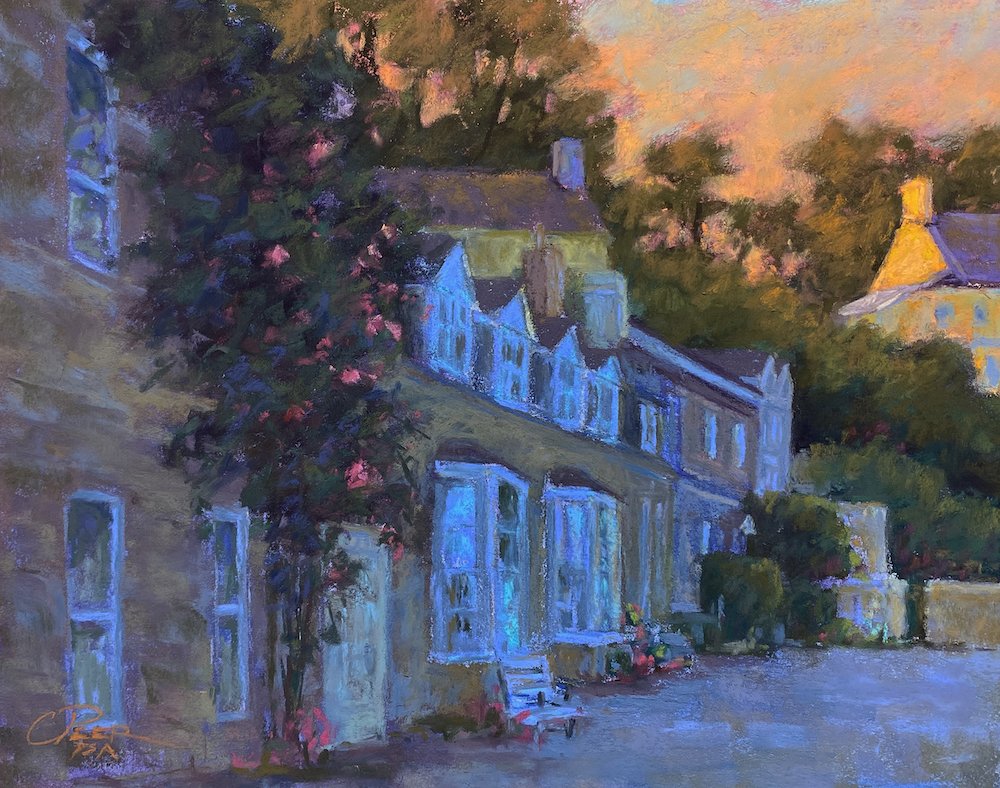Interview with artist Charles Peer
Charles Peer is an Arkansas native living in Siloam Springs. After earning a BA from Hendrix College and an MFA from UA Fayetteville, he spent 10 years painting and teaching painting in Van Buren. Later, he took a position at John Brown University in Siloam Springs in the Department of Visual Arts, which he held for 32 years and served as Department Chair from 1997-2010. Charles retired from John Brown in 2018 leaving him more time to create the beautiful pastels that have earned him numerous awards and praise. He earned the Master Circle designation from the International Association of Pastel Societies in 2018 and was awarded one of the Urania Christy Tarbet Scholarships for the 2019 IAPS. He has also been awarded Signature Membership in the Pastel Society of America and the Ozark Pastel Society. More of Charles’ work can be found at Justus Fine Art Gallery in Hot Springs and at his Facebook, Instagram and website charlespeer.com.
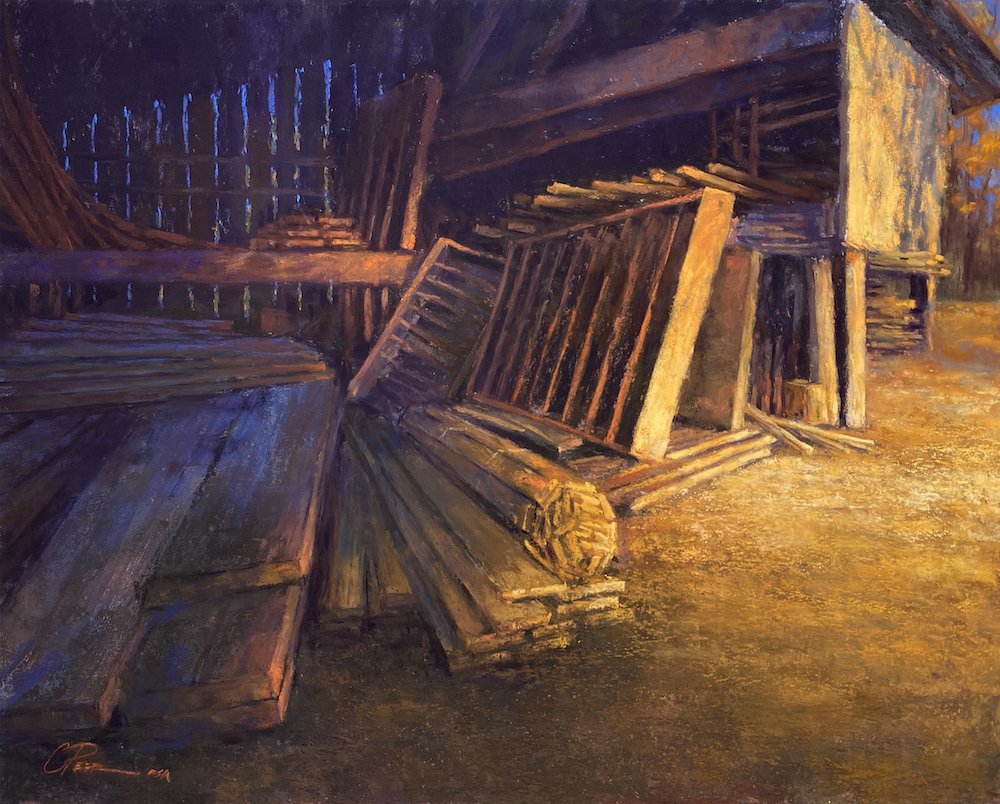
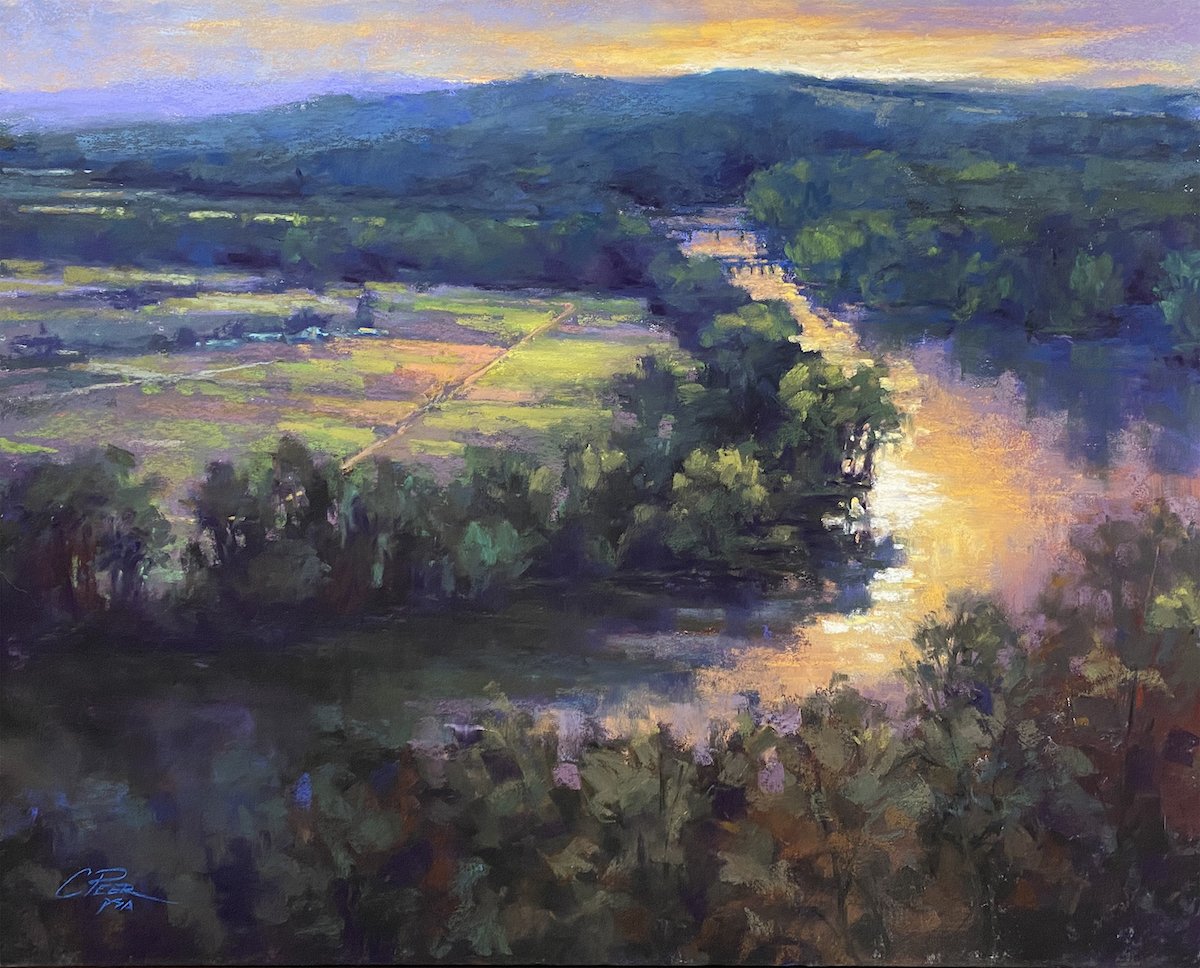

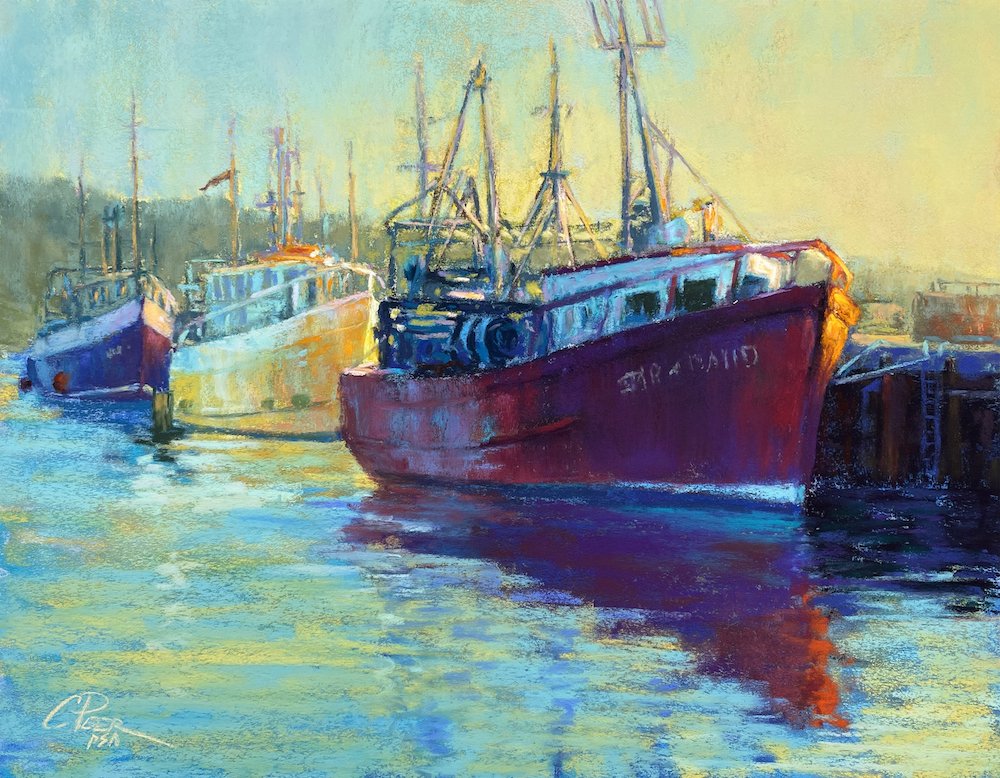
AAS: Charles, are you originally from Siloam Springs?
CP: I was born and raised in Van Buren and went through their K-12 school system. I attended Hendrix College and earned my Bachelor of Arts Degree in 1975. After working a year and a half in an advertising department post-graduation, I enrolled in the MFA program at the University of Denver and then finished that degree at the University of Arkansas in Fayetteville in 1979. I then returned to Van Buren where I opened a studio and gallery on Van Buren’s historic Main Street. For ten years I taught painting classes at the studio, ran the gallery, continue to work professionally, taught occasionally at what was then WestArk Community College (now UA Fort Smith) and for four years served as the Artist in Residence for the Van Buren School District. It was while working with the students and teachers in the district’s elementary school I met the young lady who became my wife in 1984. In 1987 I was asked to teach a few courses as an adjunct professor at John Brown University in Siloam Springs. That temporary position lasted three years and then developed into an opportunity, along with Dave Andrus, to join the university faculty full time and completely redesign the art program. I held that position for 32 years, retiring in 2018.
AAS: Were you always interested in art, even as a kid?
CP: I have had an interest in art as long as I can remember. As a child I was so very fortunate that my parents felt the importance to nurture the very diverse interests of their three sons. Consequently, they enrolled me in several children’s art classes and then, at age 12, a small group of kids of about the same age, were given oil painting classes by Mrs. Kathleen Womack, a local painter. We met every Saturday morning from 8:00 till 12:00 with a donut break at 10:00! Besides receiving the wonderful painting instruction in these classes I feel I learned the foundations for the discipline of working in art. I took those Saturday morning painting classes until I graduated from high school. When I went to college, I really didn’t anticipate majoring in art, but after drifting between a few different majors I realized that was the area where I found the most joy. I love the journey of art - the unexpected twists and turns involved in the process of creating a painting - walking the tightrope between executing the best and most inspired painting of my career or falling off the creative cliff in a disastrous crash.
AAS: How do describe your style of pastel work?
CP: Oh, that is an excellent question! I guess the term that most people would understand and associate with my style would be “impressionistic”, and I guess I’m okay with that. I simply feel I am a colorist working in a painterly style. Having had my early training as a realist oil painter I was surprised by my instant fascination with the pastel medium. I actually discovered pastels quite by accident in a graduate level drawing class. The room had been darkened for spotlighting the drawing subject matter and I accidently picked up a neighbor’s pastel stick thinking it was my charcoal stick. I immediately fell in love with the medium! I loved the intensity of the colors, the tactile quality of the pastel to sanded paper and the immediacy of applying that color. It felt like a wonderful blending of two of my favorite activities - painting and drawing. Since you are not applying color onto a substrate with a brush as you would with other mediums, painting while holding a stick of pure pigment gives you the unique sense of color flowing directly off of your fingertips. I feel this creates an intimate connection between me and a painting that I never quite found with oil painting.
AAS: I can tell from looking at your work that you must enjoy the challenge of capturing light. Tell me about Golden Hour Crossing.
Golden Hour Crossing, 20" x 20", pastel on LuxArchival sanded paper
CP: Since my particular interest lies in the study of color and color interaction, I would say more specifically that my work is about interpreting the quality of light through color. The pastel medium lends itself very well to painting with this interest of color interaction. You see, unlike oil, watercolor or acrylic, you cannot mix the color you want on a palette and then apply it to a substrate, each stick of pastel is only one color so you have to do your mixing on the painting surface itself. Nuances in color can be achieved by layering the colors, the order in which they are layered, varying the pressure you use when making a stroke or even changing our perception of a color by the color that sits next to it. These practices can be fascinating and sometimes frustrating to master.
For a number of years, I have been fascinated with this agricultural industrial structure in my little town. I pass by it often and the changing light on its surfaces is a constant source for inspiration of color, composition, texture and line. When I was passing the structure one afternoon, I knew there was something unusually interesting about that moment, so I pulled over, walked up the tracks a short distance and caught this wonderful inspiration. This composition of light versus dark and cool versus warm was one I could not pass up.
AAS: Yesterday’s Warehouse is another example of the way you use light so effectively. Are early morning and early evening scenes your favorite scenes to paint?
Yesterday’s Wearhouse, 9" x 11", pastel on LuxArchival sanded paper
CP: As I mentioned, I love to focus on the study of color and specifically how I can interpret light into color. Therefore, the morning and late afternoon qualities of light lend themselves to my work. Artists often talk about the “Golden Hour” – that brief time of evening when the low angle of the sun gives a beautiful warm glow to objects. I always enjoy trying to capture the sense of that special moment.
The old structure in Yesterday’s Warehouse is located across the street from the site we just talked about. When I drive down that street my focus is usually fixed on the view of the feed mill, but one evening I happened to notice the light upon this old, abandoned structure. There is absolutely nothing particularly unique about this metal building but at that moment it donned an amazing golden glow.
AAS: You’ve said that you strive to consciously look for the beauty in ‘everyday-ness’. One of my favorite pieces of yours is It Accumulates. You captured the light and texture so beautifully. Tell me about that piece.
CP: I’m pretty typical in that I usually go through life in a dead rush, never really paying attention to what is around me. Additionally, I think we usually live with a too narrow definition of “beauty”. Too often we live for the vacation moments at Wyoming’s Grand Teton mountains, Alaska’s aurora borealis, New York’s Niagara Falls or Cinderella’s Castle in Florida’s Disney World. Consequently, we miss moments of beauty and unexpected blessings in the things immediately around us. We overlook the beauty of light and shadows on a wall, the changing intensity of the sky’s colors, the intriguing textures in the “everyday-ness” of our lives. I often call that seeing “the extraordinary in the ordinary”. It is those moments I try to capture, for they hold the same elements of beauty and poetry of life as those grand locations listed in our travel sites. We often appreciate the photographer’s close-up shot of a single flower or an autumn leaf, but we leave it to him to find and illuminate them for us rather than making those discoveries ourselves.
Elm Springs is a nearby community that I pass through with some regularity. Along the highway is an old business that has always fascinated me and I have done several paintings of it at different times of day, but I’ve almost always viewed the structure from the front side. One morning I drove to the back and found the most intriguing collection of “stuff” – a treasure trove for visual shapes, colors and textures. There were so many interesting items in the photo reference, rather than giving undiscriminating equal attention to every area, I felt I could make a stronger painting if I could move the viewer’s eye across the piece to one particular focal area. This was done by making transitions in the color pallet from fairly desaturated colors to more intense colors, from a narrow value range (lights and dark contrast) to a more pronounced contrast, from less detail to more detail along with the aid of the compositional lines provided by the architecture, streaks of light and bends in the tree branches. This brought the eye to rest on the right side of the painting.
It Accumulates, 18" x 28", pastel on LuxArchival sanded paper
AAS: The Fire of Evening Light is another piece where light is the star. It is an amazing work. Was that done on site?
The Fire of Evening Light, 28" x 18", pastel on LuxArchival sanded paper
CP: I always enjoy painting en plein air, when I do it. Unfortunately, I don’t get myself out on location as often as I should. It is a great exercise in learning to see values and color, editing out what is not important, and making quick decisions. Because my painting techniques involve multiple processes and layering, I find I am more successful and comfortable as a studio painter. Yet even then, often a smaller plein air piece is one of the foundational tools in developing the studio piece.
The Fire of Evening Light was painted in the studio but it was done almost immediately after having the opportunity of experiencing the scene on an evening walk around my neighborhood. The low sunlight cutting through an opening in the trees created such an amazing contrast of color temperature that I had to try my hand at that visual phenomenon while it was fresh on my mind.
AAS: In Path Beside the House, you used a different technique to produce a wonderfully different effect. Tell me about that piece.
Path Beside the House, 11" x 14", pastel on LuxArchival sanded paper
CP: Another difference between painting with pastels as opposed to other painting mediums is that it is difficult to change the size of the stroke since you can’t simply select a smaller or larger brush – a stick of pastel always remains the same size. You learn to use different areas of the pastel stick depending on the effect you want. In the case of Path Beside the House, since it is a rather small painting, the individual marks of color are more pronounced than they appear in a larger painting. Even with that said my interest in color is the same. My goal in Path Beside the House was to lead you back into space by guiding your eye through a foreground of intense and exuberant colors to the very light cool and more neutral colors far down the lane.
AAS: OK, I must ask you about Warm and Welcomed. I just love that piece. I think of it almost as a portrait. Are portraits something you like to do?
Warm and Welcomed, 11" x 11", pastel on UArt sanded paper
CP: I do not consider myself a portrait painter, but occasionally figures make their way into my paintings, sometime even playing a significant role in the piece. Warm and Welcomed is one of those pieces. While traveling with friends in the Netherlands last year we were enjoying a beautiful afternoon in Delft. Quite suddenly a rainstorm came up and we ran for shelter in a nearby pub to wait out the storm. The rain lasted a bit longer than expected as did our stay. During that time, we enjoyed our visit, the pub’s warm atmosphere and the offerings of the welcoming host. So, although the focus of this piece is the bartender the painting is still about the patterns of light and dark along with color. Together they present what we read as the figure pouring a warm afternoon libation.
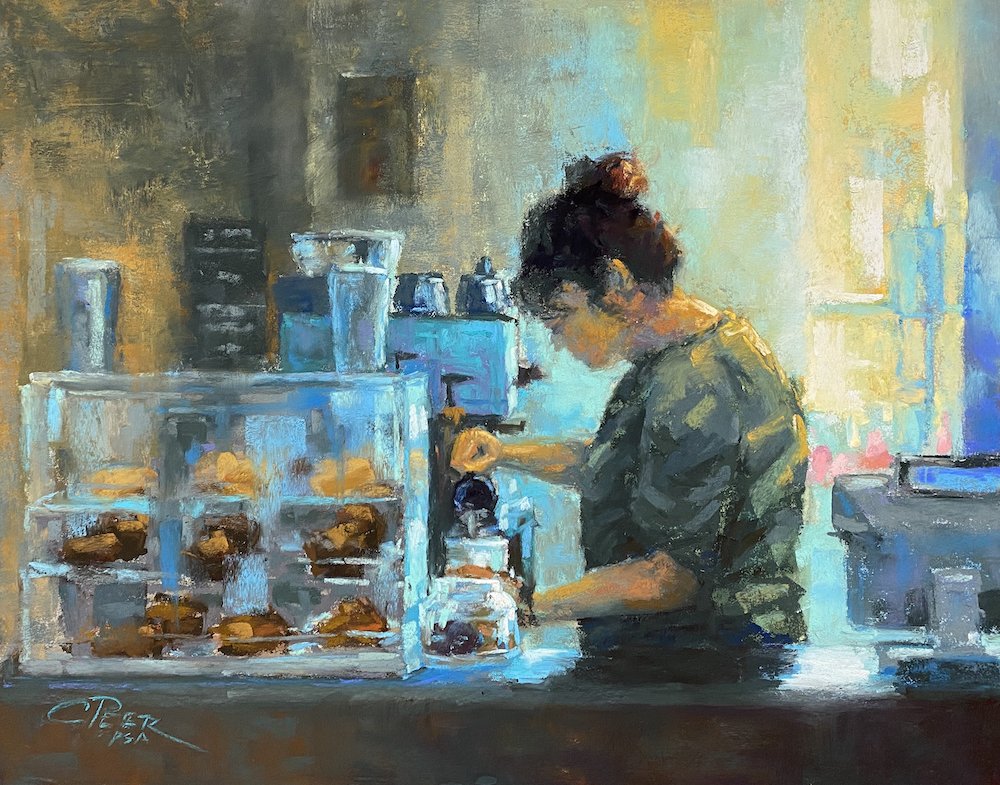
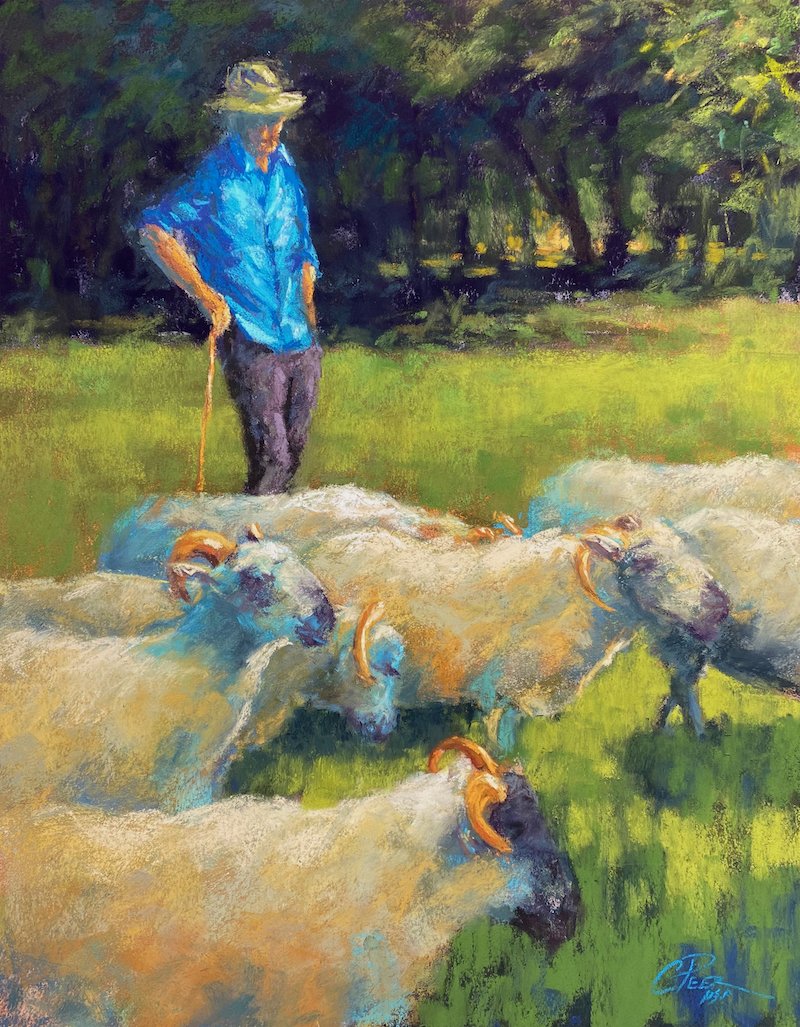
AAS: You taught for many years at John Brown University. What is it about teaching that you love?
CP: I have been very blessed to be able to pursue my professional art career and to continue to teach, both jobs that I love. I’m probably not that unusual among artists in the fact that I love the solitude of my studio. There I can focus on the creation of art without distractions. But it has been wonderful to balance that isolation with the exhilaration of working with others in the exchange of ideas, information and shared experiences. I have learned that the old adage is true: “The teacher is the one who gets the most out of the lessons, and the true teacher is the learner.”
AAS: You are very active in several pastel societies. What has the comradery of artists meant to you and your art practice?
CP: Over the past number of years, I have been fortunate to meet many wonderful pastel artists through both area, national and international pastel societies. Many of these artists have become dear and cherished friends. Each artist, from the most internationally recognized down to the newest to the medium, has been supportive, warm and generous with their artistic knowledge and encouragement. Although I have worked with a number of pastel groups such as the Arkansas Pastel Society, Oklahoma Pastel Society, and the Pastel Society of Ireland, most of the exhibits I have participated in have been hosted by the Ozark Pastel Society, Pastel Society of America and the International Association of Pastel Societies. As I have participated in their exhibits and activities, including serving as an exhibit juror for a couple of international shows, I always experience a strange combination of emotions. I often feel discouraged when I look at the quality of many of the paintings included in their exhibitions and wonder if I can ever reach such a level, and at the same time I feel exhilarated to get back to the studio to hone my own skills and reach for new levels of excellence.
